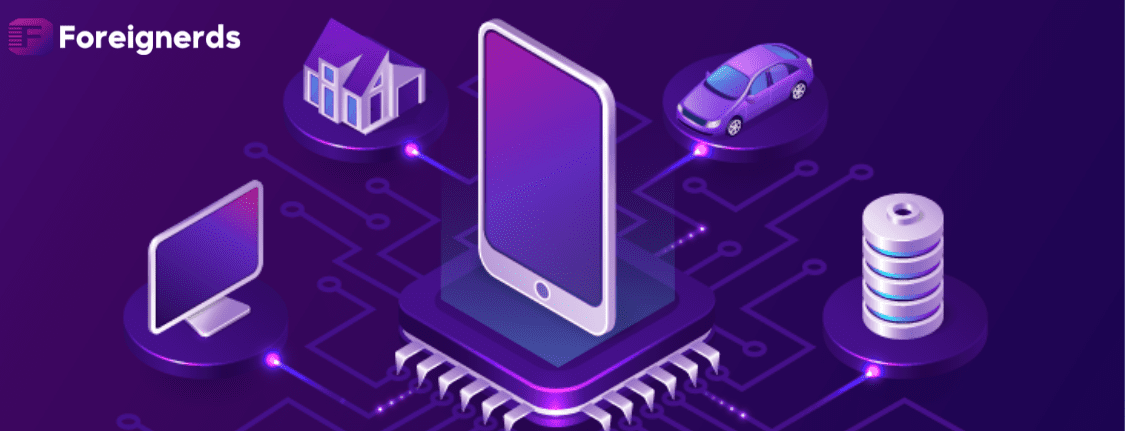- Home
- Design and Development
- What’s the Future of UX Design?

Intrigued by the prospects of a career in UX design but uncertain about its future trajectory? You’re not alone. Let’s delve into the state of the field and uncover the potential it holds amidst the dynamic shifts in our world.
As we ponder the future of UX design, it’s essential to grasp its present landscape. The journey of user experience (UX) has been remarkable since Don Norman coined the term in the 1990s. The ranks of UX professionals have swelled from 1,000 in the 1980s to a staggering 1 million by 2017, with projections estimating a further surge to 100 million by 2050. This exponential growth can be attributed to three pivotal factors: the PC revolution, the web revolution, and substantial press coverage. The advent of personal computing and the rise of the internet transformed user interactions, leading to a demand for improved usability and online presence. The “Golden Era” of UX between 2010 and 2017 saw increased awareness and mainstream recognition, propelling the field’s growth. However, predictions point toward a gradual slowing down of this exponential progression, sparking discussions about potential causes.
Contrary to concerns, the need for UX is far from fading. It’s a fact: the nature of tech-related fields is adaptation to evolving user needs. In the wake of the “Golden Era,” prioritizing user experience is a given. While seasoned UX designers remain highly sought after, the accessibility of advanced design systems has propelled junior designers to comparable skill levels. The assertion that the UX career ladder is stagnant is a misconception. The demand for UX designers persists because the field evolves alongside technological advances. Comprehensive proficiency is now essential; UX designers must understand technologies, coding, business strategies, and user expectations. While concerns about career muddling are voiced, evolved designers are not simply absorbing unrelated skills but rather integrating them into their UX design framework.
Technology doesn’t negate the need for quality UX work; instead, UX evolves in tandem with technological progress. Anticipating the future, certain trends are emerging that reshape the UX landscape:
User expectations are shifting from mere utility to enjoyable interactions. Motion design plays a pivotal role, utilizing animations and transitions to captivate users emotionally and offer seamless experiences. Gesture interfaces, vital for smaller devices like smartphones and tablets, enable intuitive interactions without overwhelming the limited screen space.
As UX expertise expands, specialization becomes paramount. Companies are seeking specialists in UX/UI, interaction design, research, content, product design, and voice-guided UI. Transitioning from generalist to specialist is feasible, with avenues like learning coding or honing leadership skills. Specialization courses in top UX bootcamps empower aspiring designers in this regard.
The rise of VR/AR, 3D interfaces, and zero UI products signifies UX’s journey into new dimensions. Incorporation of augmented reality by major corporations indicates the shift towards immersive experiences. To thrive in this landscape, designers must grasp the nuances of designing for technologies relying on gestures, voice commands, and multidimensional interfaces.
The pandemic-driven need for no-contact interfaces has magnified the importance of voice commands. Public spaces increasingly adopt voice-activated interactions, necessitating designers to master visually harmonious design that complements voice commands. Effective communication through animations and instructions becomes essential.
AI’s rapid evolution doesn’t eclipse the need for human understanding in UX. While AI excels in data analysis and prototyping, human insight is irreplaceable in addressing sensitive challenges linked to the human experience. Collaboration between AI and UX designers promises more efficient processes and innovative solutions.
In the face of evolving technologies and shifting demands, UX design remains a steadfast discipline. Rather than disappearing, UX adapts and expands, creating a sturdy foundation for product development, interaction design, UI, and coding. While the field’s landscape may undergo transformation, the essential principles of user-centered design endure. Whether you’re considering entering the field or already immersed in UX, rest assured that its future is promising, vibrant, and brimming with possibilities. As technology marches forward, UX design evolves in tandem, ensuring its relevance in our increasingly digital world.
© 2013 - 2025 Foreignerds. All Rights Reserved